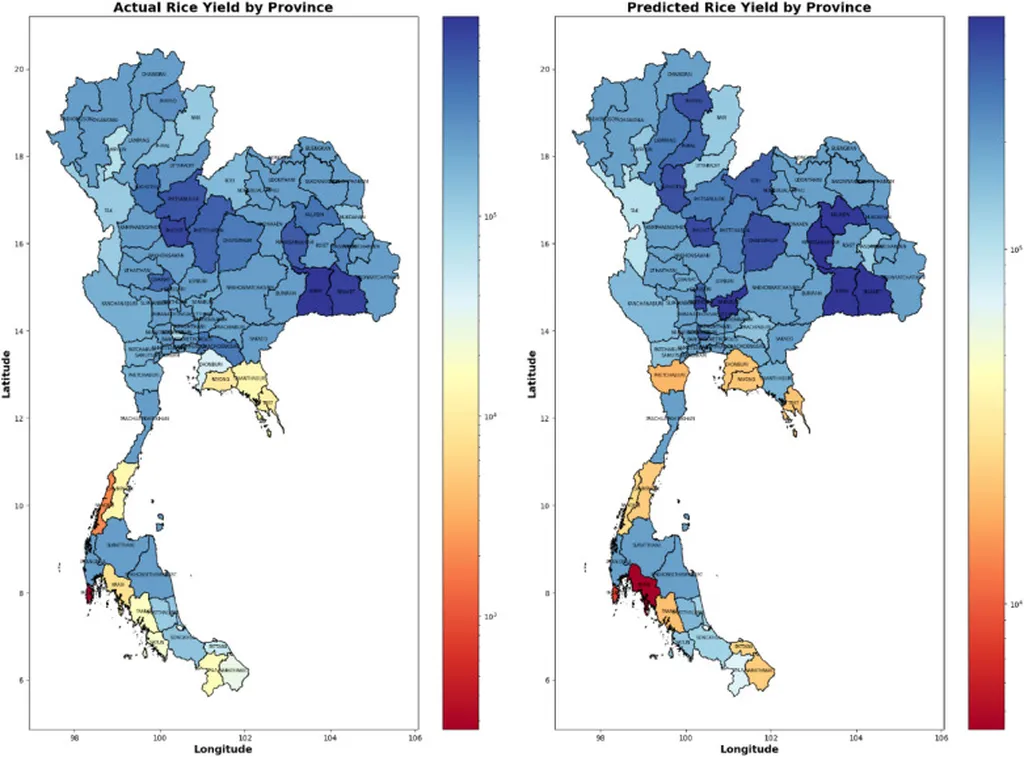In the heart of Bangkok, at King Mongkut’s University of Technology Thonburi (KMUTT), a groundbreaking study is unfolding, one that could reshape how we understand and predict the impacts of climate phenomena on global agriculture. Led by Usa Humphries Wannasingha from the Department of Mathematics, this research delves into the intricate dance between the El Niño-Southern Oscillation (ENSO) and cereal crop yields, with a particular focus on rainfed rice in Thailand. Published in *MethodsX* (translated to English as “MethodsX”), the study is a beacon of hope for climate-resilient agriculture, offering insights that could mitigate the commercial impacts of climatic extremes on the energy sector.
ENSO, a natural climate phenomenon characterized by fluctuations in ocean temperatures in the Equatorial Pacific, has long been known to influence weather patterns worldwide. El Niño events, typically associated with reduced rainfall, can lead to droughts that stress crops, while La Niña events bring excessive precipitation, causing floods. Both extremes adversely affect rice productivity, a staple crop for millions. “The variability in rainfall and temperature patterns due to ENSO phases poses significant challenges to agricultural systems, particularly in tropical regions,” explains Wannasingha.
The study synthesizes findings from two decades of research, highlighting the potential of artificial intelligence (AI) in predicting ENSO-induced impacts on crop productivity. AI models such as Random Forest (RF), Long Short-Term Memory (LSTM), and Convolutional Neural Networks (CNNs) have shown promising results. These models can analyze vast amounts of data to predict how different ENSO phases might affect crop yields, providing valuable insights for farmers and policymakers.
However, the journey is not without its hurdles. “While AI models show strong potential, limitations remain in terms of scalability and local adaptation,” notes Wannasingha. The study emphasizes the need for hybrid modeling approaches that integrate physical and statistical methods to enhance accuracy and reliability. Future research must also focus on improving data quality and integrating adaptive technologies to support climate-resilient agriculture.
The commercial implications of this research are profound, particularly for the energy sector. Agriculture and energy are deeply intertwined, with fluctuations in crop yields affecting bioenergy production and food security. By better predicting the impacts of ENSO on crop productivity, stakeholders can make informed decisions that stabilize supply chains and mitigate economic risks.
As we stand on the precipice of a climate-conscious future, this research offers a glimpse into the transformative power of AI in agriculture. It underscores the importance of interdisciplinary collaboration and adaptive technologies in building a resilient and sustainable world. The findings published in *MethodsX* are not just a testament to the advancements in AI but also a call to action for a more climate-resilient future.

